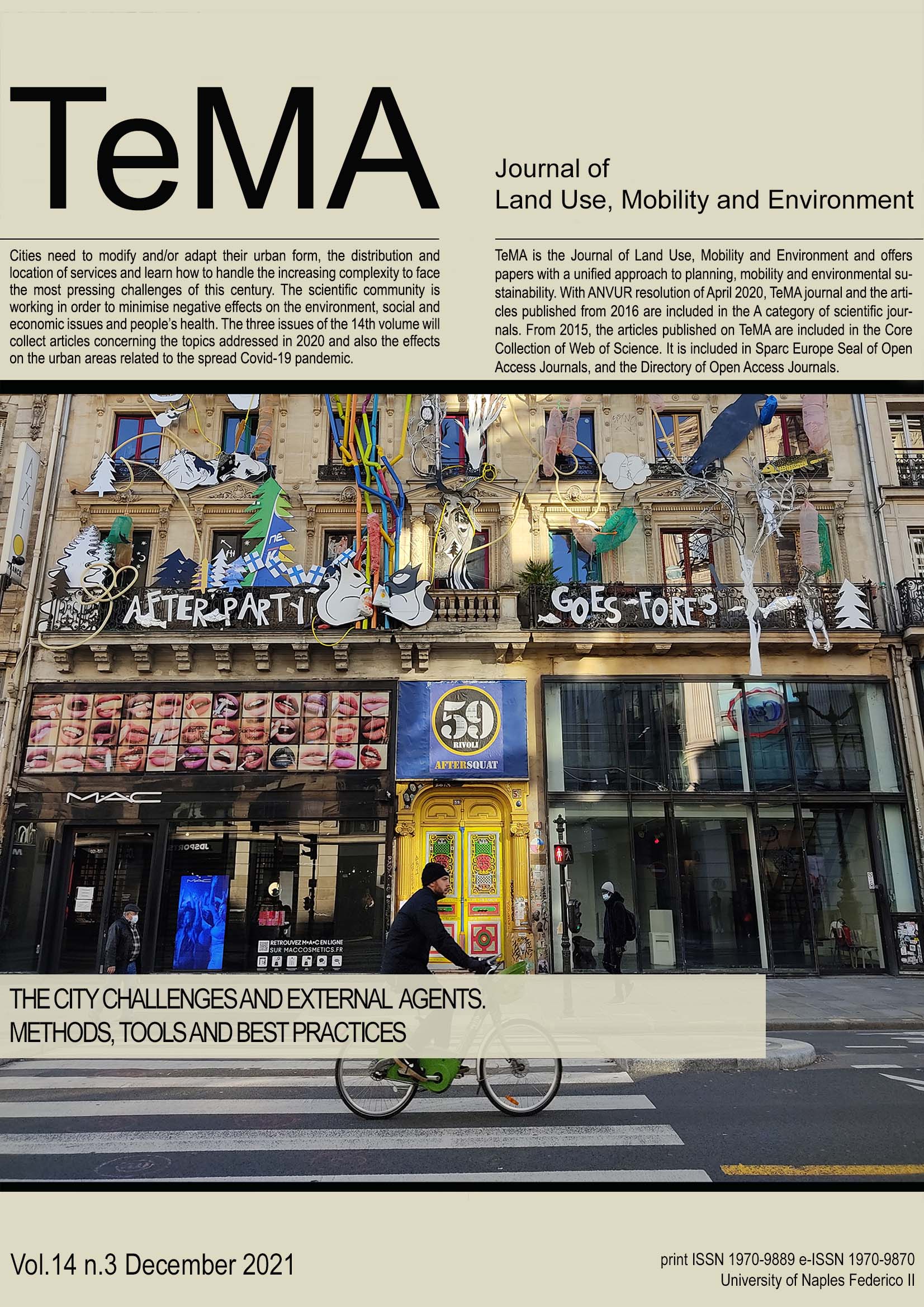Public space and 15-minute city
A conceptual exploration for the functional reconfiguration of proximity city
DOI:
https://doi.org/10.6093/1970-9870/8062Keywords:
post-pandemic city, centralities, 15-minute city, placemaking transformative, public spaceAbstract
The global Covid-19 pandemic has changed individuals, uses and perceptions of spaces and cities. The current debate in Urban Planning is animated by the themes of proximity, public space and accessibility to essential urban functions. The functioning of the contemporary city has definitely exploded, showing its shortcomings and underlining the need to interpret it as a fragmentable and self-sufficient entity in case of emergency. The new urban models and approaches adopted seek to respond to this by reallocating essential urban functions and eco-systemic connections so that the urban and peri-urban cooperate to initiate a process of socio-economic development. The idea of a multi-polar system marked by the metric of time of use is pursued. The centrality evolves from the geographical concept to the directional one, becoming infrastructural and cognitive to increase the liveability of the urban space. The aim of the paper is to evaluate how urban transformations, through the analysis of best practices and scientific literature, can be elements in support of the proximity city and how transformative placemaking can be part of the strategy.
Downloads
Downloads
Published
How to Cite
Issue
Section
License
Copyright (c) 2021 TeMA - Journal of Land Use, Mobility and Environment

This work is licensed under a Creative Commons Attribution-NonCommercial 4.0 International License.



